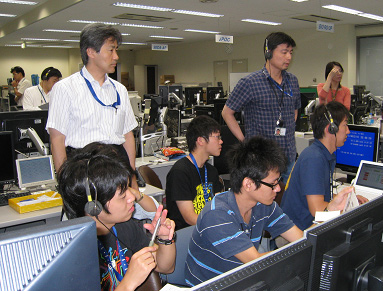This is an archive of information released in the past.
Disclaimer: It may contain broken links or outdated information. Some parts may not function in current web browsers.
*Visit https://humans-in-space.jaxa.jp/en/ for the latest information.

Experiment
- News
- Kibo Utilization Strategy
- Kibo Utilization Plan
- List of JAXA's Utilization Themes
- Experiment Facilities
- Space Environment Utilization
- Archive
MEIS (Marangoni convection experiment) Series2 Begins
* Dates and times are given in Japan Standard Time (JST)
Aboard Kibo, Marangoni convection experiment (MEIS)* Series2, which uses the Fluid Physics Experiment Facility (FPEF) in the RYUTAI Rack, began on July 31. Nishino Koichi, Professor of Yokohama National University succeeded the MEIS as Principle Investigator (PI) for this second series. Based on the results of the MEIS first series, this second series will investigate further details using the similar operational method.
* Chaos, Turbulence, and its Transition Process in Marangoni Convection (MEIS)
The experiment began at 7:41 a.m. on July 31, after checkouts of the facilities and equipment of the experiment was performed with commands from the Tsukuba Space Center (TKSC).
The MEIS Series1 focused on characteristics of the fluid flow in the large liquid bridge made of silicon oil. The Series2 will investigate variation of flow patterns (change in the flow pattern from stable flow to oscillatory flow), aiming to quantitatively examine convection appeared on the liquid bridge surface, based on the data collected during the first series.
The experiment is expected to continue until the end of August.
Comment from Principle Investigator Koichi Nishino
The MEIS Series2 began on July 31. As well as the MEIS Series1, which was performed last year, this series will also observe behavior of the surface tension-driven convection in the liquid bridge with high aspect ratio. Such behavior is hard to observe on the ground. The experiment uses new experiment tools, called 3D flow measurement and surface flow measurement. Our measurement techniques, which took us years for development, will finally be used on orbit.

Professor Nishino (back left) and his project team members monitoring the experiment to start at the User Operations Area (UOA)

An image of liquid bridge formed in the experiment
*All times are Japan Standard Time (JST)
| Copyright 2007 Japan Aerospace Exploration Agency | Site Policy |